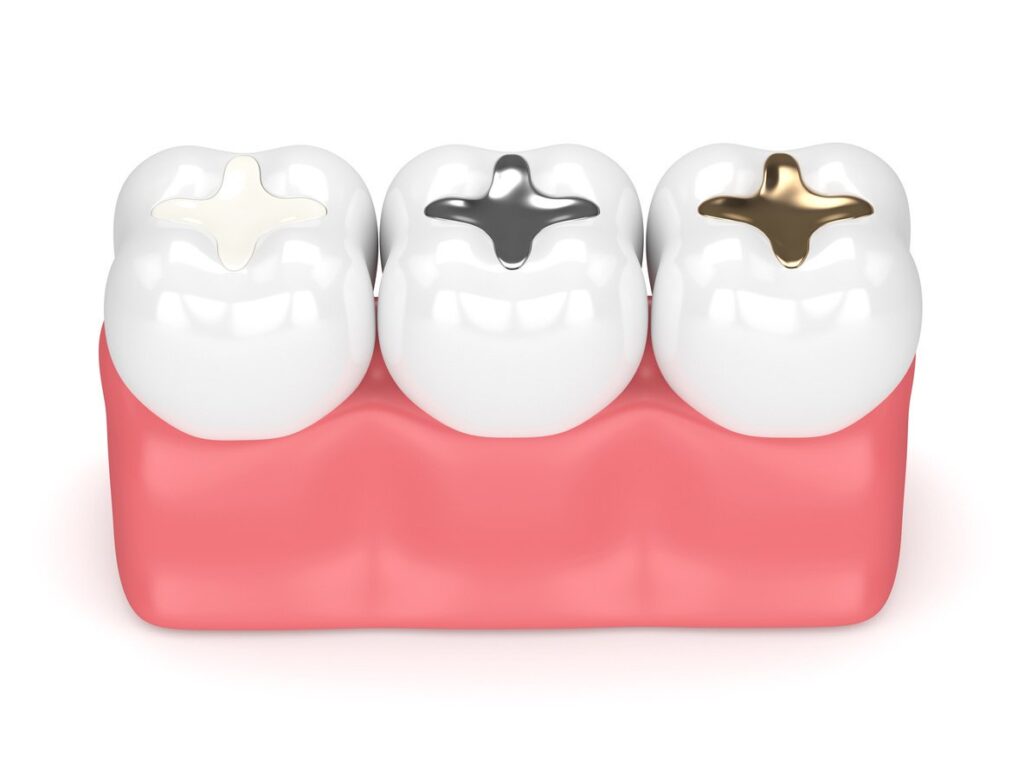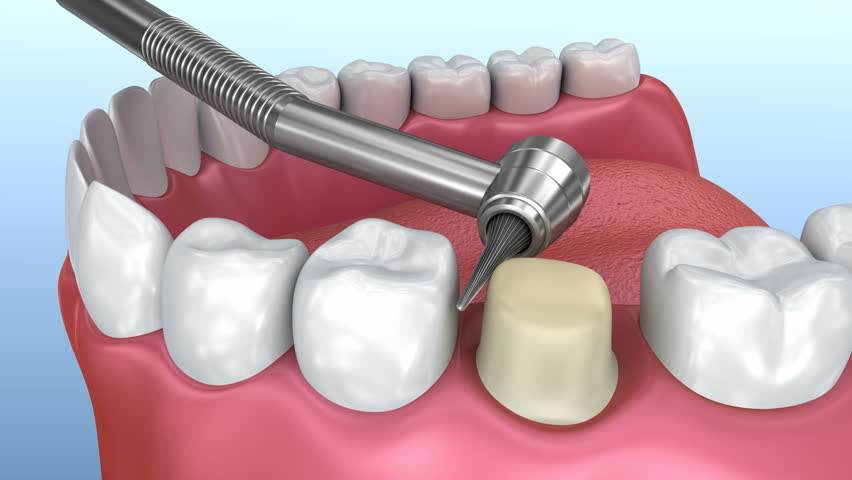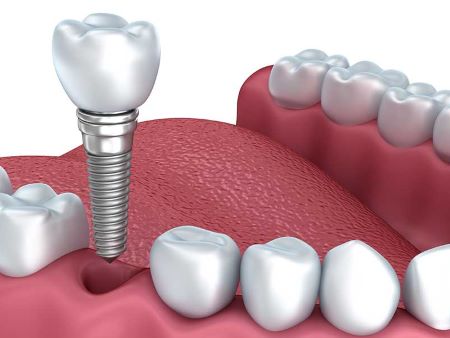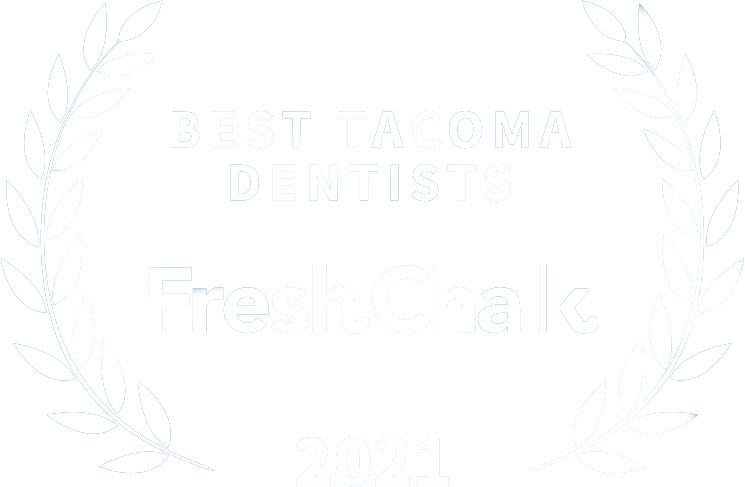What is restorative dentistry?
Restorative Dentistry involves processes to replace missing teeth or restore damaged teeth to normal function.
The easiest and most common restorative treatment involves cavities. The decayed part of the tooth is removed, and a filling is placed to restore the tooth.
At Bright Smile Dental, filling cavities is a common treatment. We also, however, take restorative dentistry to a higher level. Our goal is to give you a healthy smile while preventing future oral health issues.
Dr. de la Paz can help you with most dental restoration needs. In addition to composite fillings, other treatments he performs include root canals, crowns, implants, and bridges.
Why is restorative dentistry important?
If you are missing a tooth, the remaining teeth shift and move. This can affect your bite and make oral hygiene more difficult. It can also affect your self-esteem, as people notice missing and crooked teeth.
Ignoring a cavity won’t make it go away. In time, it will only get worse. This increases the cost, time, and pain associated with restoration. After all, a filling is much easier than a root canal or extraction.
What is the process for restorative dentistry?
Restorative dentistry begins with diagnosis. To get the most accurate diagnosis, Dr. de la Paz will perform a thorough examination. This includes visual and mechanical inspection and diagnostic imaging with digital x-rays.
Once Dr. de la Paz makes a diagnosis, he will discuss the most conservative treatment options available. Some treatments, such as filling a cavity, can be completed in a single appointment.
For more complex treatments, however, multiple visits may be needed. For instance, many treatments require an impression. Some treatments, such as those for extensive decay, call for root canal therapy or tooth preparation prior to the impression. If needed, Dr. de la Paz will discuss sedation options for your comfort.
Impressions are taken and sent to the lab for fabrication of your restoration. If needed, a temporary solution may be placed while we await your permanent restoration.
The dental lab uses four primary types of materials when fabricating restorations. The options include amalgam (metal), precious metal (gold), porcelain, and composite resin. Dr. de la Paz will discuss this with you and help you choose the best option for your situation.
Once we receive your permanent restoration from the lab, Dr. de la Paz will fit it and cement it in place.
What are the restorative options?
At Bright Smile Dental, we offer several restorative dentistry options.
Filling a cavity
For mild dental decay, a filling is the best solution. This treatment takes approximately one hour in a single appointment.

Factors such as preference, price, and location of the cavity help determine the filling material. For instance, amalgam fillings are cheaper, but they are highly noticeable and contain trace amounts of mercury. If the cavity is on a tooth that is visible when you smile or laugh, you may prefer the natural color of composite or resin.
The first thing Dr. de la Paz will do is numb the affected areas. Once you are numb and comfortable, he will remove the decay. When all the decay is removed, he will place a filling in the tooth.
Inlays and Onlays
If your tooth decay does not affect the cusps of the tooth, you may prefer an inlay over a filling. While this process takes more than one appointment, inlays have several advantages. For instance, a filling can weaken a tooth, whereas an inlay is cemented into place and strengthens the tooth. This also makes the inlay more durable than a filling. In addition, it fits better, as it is custom made based on an impression of your cavity. Inlays are made from either composite resin or porcelain to match the tooth color, making them hard to notice.
Onlays are the treatment option when decay or damage affects the cusp or biting surface of a tooth. Much like an inlay, an impression of your tooth is made and sent to the lab. Since this involves more of the tooth and potentially a biting surface, Dr. de la Paz may place a temporary restoration.
Root canal therapy
If your dental decay goes beyond the surface toward the root of your tooth, root canal therapy may be needed. Often, severe decay causes a deep infection in the pulp of the tooth. If not treated, it will only become worse.
While the number one patient complaint with this infection is pain, it is important to note pain is not always present. Therefore, a lack of pain does not necessarily mean a root canal is not needed.
Root canal treatment begins with local anesthetics to keep you comfortable. Some patients are also given nitrous oxide (laughing gas). Once you are comfortable and numb, Dr. de la Paz will clean out the entire root canal. This includes the tooth pulp and nerve.
With the nerve removed, the tooth loses the ability to feel pain.
Once completed, Dr. de la Paz will close the tooth with a filling. However, since the tooth is now damaged and has no nerve root, it will need a crown for long-term stability.
Dental Crowns
A dental crown is a tooth-shaped cap that takes the place of the visible part of a tooth. If you have had root canal therapy or have a severely cracked, chipped, broken, or damaged tooth, a crown may be needed.

Crowns also replace missing teeth, such as with a dental bridge or implant. In addition, they can be used for cosmetic purposes, such as with a severely discolored tooth.
While the most common material for a dental crown is ceramic or porcelain, resin or stainless steel may be an option. If you need a crown, Dr. de la Paz will discuss which is best for you.
Aside from adding a crown to a dental implant, support of a crown may require either filing down or adding to the tooth. Once the tooth is either filled or filed to the proper size and shape, an impression is made.
A temporary crown is placed to protect the tooth until we receive the permanent crown from the lab. Once we receive the custom-made crown, Dr. de la Paz will fit it and cement it in place.
Dental Bridge
A dental bridge is a prosthetic device that replaces natural teeth. While not considered a permanent option, bridges are cemented in place and not removable. This option serves as a “bridge” for missing teeth by adding crowns to adjacent teeth to anchor it in place. The bridge includes a pontic (replacement tooth) for up to three teeth.
A bridge helps keep other teeth from moving and works just like a natural tooth. The downside of a bridge is that the root is not replaced, so bone loss occurs around where the root should be.
Dental Implant
A dental implant is a permanent solution for a missing tooth. While the initial upfront cost may seem high compared to a non-permanent solution, the benefits make it worth it.

When you lose a tooth, the remaining teeth shift and move. This not only affects the appearance of your smile, but it can affect your bite. Crooked teeth also make oral hygiene more difficult. A bridge or partial can help these issues, but they won’t address the problems associated with a missing tooth root. In addition, these treatments have limitations. For instance, a partial is not cemented in place and must be removed to eat. While a bridge is fixed in place, it can have a short lifespan.
Without a tooth root, bone loss occurs in the jaw. This can cause problems to adjacent teeth and give your face a sunken appearance.
A dental implant addresses the shortcomings and limitations. They are a permanent, long-term solution.
This procedure involves a titanium implant screwed into the jawbone. Since titanium is compatible with the human body, bone develops around the implant, securely fastening it into place. After a time of healing, the dentist places an abutment to allow attachment of a crown. The end result is a secure, natural-looking tooth that can last a lifetime.
Schedule Your Appointment Today
If you are missing a tooth, suffering from dental pain, or think you may have a cavity, make an appointment with Dr. de la Paz today , Call us today at (253) 475-0262 Or Schedule An Appointment Online.

